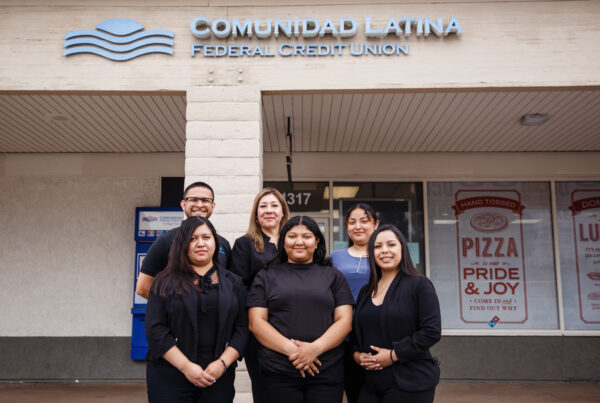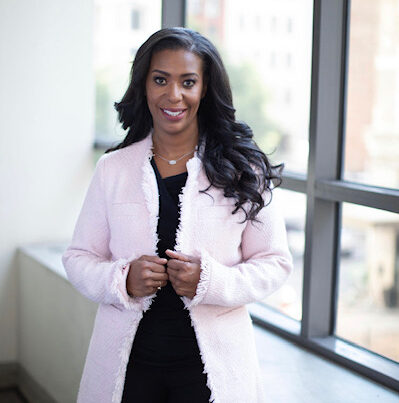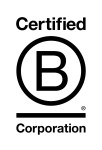Emily Sipfle’s interest in CDFIs came out of her time as an AmeriCorps Vista volunteer working with an affordable housing organization in Chicago. Emily ended her service with a growing interest in community development projects, particularly the funding aspect of those projects, and went on to receive a masters degree in urban planning and policy from the University of Illinois, where she discovered the important economic role that CDFIs play in many communities across the country.
Emily currently works FUND Consulting, a Chicago firm focused on providing strategic and operational services to CDFIs. Founded in 2000, FUND Consulting has worked with over 350 clients and raised over $492 million in government and local grants, investments, and tax credits for its clients. In addition, FUND Consulting has helped organizations understand market needs to enhance and develop products and services through the completion of over 130 market research projects and supported the strategic growth of organizations through the delivery of over 120 business, strategic, and capitalization plans.
Prior to joining, in 2015, Emily was the director of impact at National Community Investment Fund (NCIF), a CDFI nonprofit private equity fund that specializes in supporting mission-oriented banks, including CDFI banks, through research and investments. We took the opportunity to catch up with Emily to talk about the power of CDFIs, the opportunity of impact investing, and the future of community lending.
CNote: What led you to FUND Consulting?
Emily Sipfle: I have worked at several different CDFIs in the Chicago area, and that helped me get some experience in the field before coming to FUND. My background is largely more on the data research and impact tracking side of things, and working within CDFIs was a really helpful way of seeing how their work gets done. That’s what led me to FUND, where I now get to work with CDFIs all across the country and across the spectrum of size and product type. Our position here at FUND is really exciting because we can see what’s happening nationally, as well as all of the creative solutions different CDFIs are coming up with for community and economic development challenges in their own community.
CNote: Tell us a little bit about the work you do at FUND.
Emily Sipfle: FUND Consulting was founded 20 years ago, and in that time, we’ve worked with more than 350 so different clients. Our focus has been on CDFIs, but CDFI work ties closely into supporting nonprofits more generally. We provide a range of services, including everything from helping organizations think through whether they should become certified CDFIs, through preparing grant applications and providing help with compliance reporting and annual reporting: basically, all of the work that needs to be done to be a CDFI, maintain CDFI status, and access the CDFI Fund’s programs.
We also offer a range of strategic projects that are designed to support the work of CDFIs and nonprofits, like strategic planning, capitalization plans, market studies, and impact analyses. Our goal is ultimately to try to so increase the capacity of CDFIs and other nonprofit organizations so they can create positive outcomes in their communities. It’s really rewarding work.
I am also a board member of FUND Community Institute, a nonprofit think tank conducting independent studies, partner projects and commissioned researched. FUND Community Institute’s grew out of FUND Consultant’s experience in the CDFI and community development field and now the two organizations form the FUND family of organizations to facilitate positive social, economic, and environmental impacts in communities nationwide utilizing multiple approaches.
CNote: How does data and impact tracking fit into your work with CDFIs?
Emily Sipfle: That’s definitely my background, and that’s carried over into my work at FUND. We have a series of impact-related reports that we put together for our clients that can help be a tool for CDFIs to better understand their impacts internally as well as make the case for their work if they are going out to investors or grant funders, etc. We also have a product called Impact Systems Analysis, which is designed to help the clients be better at tracking their own impacts.
CNote: How do you explain CDFIs to someone who’s not familiar with them?
Emily Sipfle: I like to think of CDFIs as innovative lenders that are working in underserved or distressed communities or populations in order to help them increase access to capital and create positive change.
There are places that traditional banks just don’t go or where other lenders can’t make a product work — That’s really where CDFIs step in. They’re able to look beyond the simple margins and commit to making the loan that helps to create positive change in the community.
CNote: Do you think CDFIs have a broader impact on the U.S. economy?
Emily Sipfle: Compared to the number of banks and credit unions in the country, there are a relatively small number of CDFIs – about 1,100 CDFIs currently. While in terms of asset size or dollars out the door in loans, they are small, CDFI are a very important part of our overall financial system, and I think they do have impacts that we can point to in terms of being more community focused.
They’re often able to identify local challenges and then come up with flexible solutions to make loan products that works for a given community or local region. To quantify the overall effect of CDFIs on the economy, it’s may not be easy to surface big macro numbers, but if you were to dial down to the more local level and even to the household or small business level, a CDFI can have a lot of impact there. This is particularly important because, as I’ve mentioned, CDFIs are often working in areas or with populations where other financial institutions are not.
While CDFIs are a very small niche of the financial industry overall within this country, they are creating outsized impacts on the ground, just because of their ability to be community focused and flexible in the financing they’re able to offer. The other great work that they do that maybe is less apparent sometimes is just how much they do in terms of technical assistance and helping borrowers to better enter the financial mainstream.
CNote: How are CDFIs able to be more flexible than traditional banks?
Emily Sipfle: It comes both from the mission of CDFIs and what they are trying to do, as well as the scope of who they work with.
In some communities, CDFI staff might have a personal, on-the-ground relationship with a borrower who’s struggling. That local knowledge helps the CDFIs’ staff be nimble when challenges do arise, and it also adds comfort that’s hard to gain from looking at a credit report when you’re trying to understand a borrower, for example.
Of course there are CDFIs that are much larger and don’t have that may not have that level knowledge of a borrower, but based off of their mission of lending to organizations or individuals that traditional banks aren’t able to reach, there is very much an interest to have flexible terms at the onset of offering a loan product to help get dollars out the door. A good example of some of these flexible terms is being able to look beyond the credit report for alternative flows of capital that a borrower might have.
CNote: What are some changes you’ve seen in the industry since you started working with CDFIs?
Emily Sipfle: My position in the industry has been an interesting one because I came in just after The Great Recession. So in some ways, I have seen how the industry responded to that. I know anecdotally, CDFIs continued to lend during the recession and in the time following, when traditional banks and other financial institutions were pulling back and really restricting their credit standards.
In the past 10 years or so, there’s been substantial growth in the number of CDFIs, and in recent years, there have been new lenders that are coming into this space, specifically with the intention to follow a CDFI mission of financing needs of underserved communities. As the industry grows overall, it continues to be an interesting balance of some that are very small and locally based and other CDFIs that are growing in size and scale and are tackling regional challenges or even have a national footprint.
CNote: What’s one of your favorite examples of a CDFI doing what a CDFI does best?
Emily Sipfle: There’s a CDFI loan fund we work with that does small business lending. They lend as little as $500 to establish a payment track record to improve their credit score. There’s certainly not much money to be made on a $500 loan after you do all the paperwork and reporting and your staff time to get it ready. But it can be really important to that borrower just to help them start to develop a credit score again. They also make loans up to $100,000 for more established small businesses.
They’ve also put together a really innovative and impactful program where they are working with a range of partners, to work on a recidivism prevention program. This program starts with inmates who might have an entrepreneurial spirit and an idea for a business. The program provides them with training to help develop that with some more business development skills so that when they get out of prison, they can make their own job. The solution that this CDFI has identified to help people make their own jobs by becoming small business owners. The CDFI helps to make that possible both by coordinating resources and providing the loan.
CNote: How do you think CDFIs’ capital need gap can be filled?
Emily Sipfle: Solving the capital gap is always going to be a moving target because there’s just so much unmet demand for CDFIs’ products — If you keep giving them more money, they will keep finding good work to do with it.
Other than that, I think there needs to be kind of a couple-pronged approach. One is in terms of just the overall volume of capital. I would love to see CDFIs being able to access funds from impact investors and other sources. They are creating the impacts in the community that investors would potentially be interested in, but it’s about creating that link and familiarity in order to make the investors feel like they’re comfortable with an investment in a CDFI.
The second prong that I think would help meet the needs of CDFIs is the availability of flexible capital. Grant dollars, for example, that could be used to support loan loss reserves or to be used for internal operations to help CDFIs to build out their own systems and be more effective and, importantly, try out new products. As I’ve mentioned, CDFIs have a local grounding and knowledge, so they see what’s happening on the ground and identify potential gaps. But it can be hard for them to deploy a new loan product if they don’t have flexible capital to try out a new product or to provide loan loss reserves to protect the portfolio overall.
It’s about getting a certain volume of funding as well as having at least some of it that can be flexible use for reserves or internal purposes to help build out the innovative side of what CDFIs can do.
CNote: Do you have any predictions as to how the CDFI industry will evolve in the future?
Emily Sipfle: I think there’s benefit both in collaboration and consolidation where it’s appropriate. There’s a lot of conversation in the industry about ways that collaboration can be utilized on the back end in terms of back-office work. If there’s some way that CDFIs could come together on back-office work, it could potentially free up staff time and resource for other activities. There are initiatives like that underway to think through how resources could be pooled to make on the ground to work more efficient and go farther in terms of staff time.
I also think there will be a growing number of these larger CDFIs, partially just because success tends to breeds success in terms of what funds you are able to capture, whether it’s through grants or larger scale things like impact investing. I’m not sure that the question has been cracked yet of just how CDFIs can fully take advantage of impact investing as an industry, but I certainly think the future holds the potential to do so.
CNote: What are your thoughts on impact standardization?
Emily Sipfle: Itis certainly a known challenge for the industry and something that there’s been a lot of conversation about. One of the challenges is, again, that range of CDFIs and what they do. For some, it’s they’re small, they’re focused on providing their products and services, so setting up comprehensive impact tracking systems is a real lift for them in terms of staff capacity. Part of what we do at FUND is build out more effective systems for capturing impact so that it can be transferred back into information to include in the grant application or marketing materials or potential funding requests.
More complex conversations are happening in the industry in terms of how impact data can be used to really attract larger scale investments and how could CDFIs come together to create a standard set of impact metrics, whether it’s as an industry overall or maybe by type of lender. It’s certainly an ongoing challenge and an ongoing effort, and it ties back into the investment side, because many CDFIs are interested in utilizing a wider range of capital sources and know that they need to get the data out there in a way to make a compelling case for impact investors.

Emily works for FUND Consulting a women-owned firm located in the City of Chicago with a staff of ten. Founded in 2000, FUND Consulting has worked with over 350 clients and raised over $492 million in government and local grants, investments, and tax credits for its clients. Their team provides both strategic and operational services to community development financial institution (CDFI), nonprofit, and government clients nationwide.









